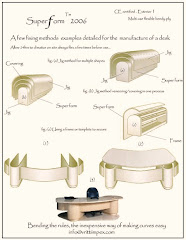The Seagull outboard that was gifted to me some years back and is now having a small restoration.
It is a Century 100 model and uses a 10:1 fuel mix, a 25:1 mix may be possible?
I have been informed by the company that has taken over Villiers, that it is possible to alter the fuel mix from 10:1 without changing the No 3 Needle. They suggest it is possible to reduce the mix as far as 20:1, with a little trial and error. The method is simple. The securing screw for the needle may be lowered up to 3 turns, no more, from level with the top of the slide. It is possible that this will not work on all motors and indeed the best you may achieve is 16:1, but even that is better than 10:1! I can imagine it will take a little while to find a 'happy' mix for engines, but at least there is an alternative
This is a circa 1961/62 made motor, rated to 4hp it will push along a fair sized boat, it has a four propellor.
There is nothing mechanically wrong with the motor, it just needs bit of bling to make it look nicer.
There is an issue with the brass petrol tank, the one side is badly creased and the end needs cutting right off and reworking, this will not be done just now.
The spare tank we have has the petrol tap outlet on the wrong side, so unless a longer supply to the carb is used is of no use.
For now the main change was to remove the thinner down tube and replace it with one with nicer chrome plate on. The chrome band clamp to the top of the large down tube has also been replaced.
We also re chromed the large dome nut on the top of the flywheel, plus other nuts and bolts were required.
The motor looks good for its fifty six years !
The points are set to 0.020" or 0.50mm, the same with the spark plug. Its worth having both correct as this is in effect the timing of the motor.
The Villiers coil can be seen opposite the points, the coil is brown.
Next is to strip and clean the carb and repaint it, check the points, change the gear box oil for some Castrol 140 grade and start the motor.
Have you ever wondered what parts are inside a British Seagull Villiers carburetor?
Tested with a spark plug and a pull on the starter rope and we see a big fat spark!
I wonder does my friend want his motor back?













